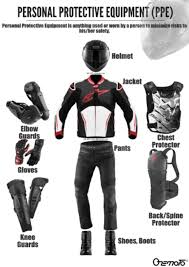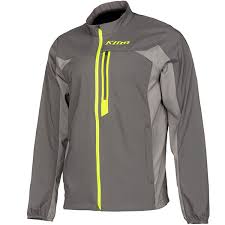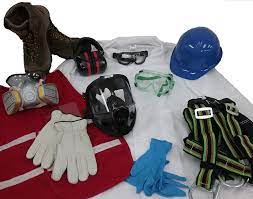
The Importance of Motorbike Protective Clothing
Riding a motorbike can be an exhilarating experience, but it also comes with inherent risks. One of the most important aspects of motorcycle safety is wearing appropriate protective clothing. Motorbike protective gear is designed to provide riders with essential protection in the event of an accident or fall, helping to minimize injuries and potentially save lives.
Helmet
Perhaps the most crucial piece of protective gear for any motorcyclist is the helmet. A high-quality helmet can prevent head injuries and reduce the risk of severe trauma in case of a crash. When choosing a helmet, look for one that meets safety standards and fits properly to ensure maximum protection.
Jacket
A durable motorcycle jacket not only offers protection from abrasions in case of a slide but also provides additional padding and impact protection for your upper body. Look for jackets made from materials like leather or textile with built-in armour on critical areas such as elbows, shoulders, and back.
Gloves
Motorcycle gloves are essential for protecting your hands in case of a fall. They provide grip on the handlebars, shield your hands from debris and weather elements, and offer impact protection to reduce the risk of hand injuries during accidents.
Trousers
Motorcycle trousers or pants are designed to protect your lower body from abrasions, cuts, and impact injuries. Look for trousers made from sturdy materials like leather or textile with reinforced padding on the hips, knees, and thighs for added protection.
Boots
Proper riding boots are crucial for protecting your feet and ankles while riding a motorcycle. Motorcycle boots should be durable, comfortable, and provide ankle support to reduce the risk of fractures or other injuries in case of an accident.
Investing in high-quality motorbike protective clothing is not just about following regulations; it’s about prioritizing your safety on the road. By wearing appropriate gear every time you ride, you can significantly reduce the severity of injuries in case of an accident and enjoy peace of mind knowing that you’ve taken steps to protect yourself while indulging in your passion for motorcycling.
Seven Key Benefits of Wearing Protective Clothing for Motorcyclists: Safety, Comfort, and Responsibility on the Road
- Enhances rider safety by providing protection in case of accidents or falls.
- Reduces the risk of serious injuries, such as head trauma, abrasions, and fractures.
- Offers impact protection for vital areas like the head, elbows, shoulders, knees, and back.
- Improves rider comfort by shielding against weather elements and road debris.
- Enhances visibility on the road with reflective materials or high-visibility designs.
- Increases confidence and peace of mind while riding knowing you are well-protected.
- Promotes responsible riding behaviour and sets a positive example for other motorcyclists.
Seven Drawbacks of Motorcycle Protective Clothing: Costs, Comfort, and Care Considerations
- Can be expensive, especially high-quality gear
- May feel bulky or restrictive, affecting comfort
- Requires proper maintenance and care to ensure effectiveness
- Some protective clothing can be challenging to put on and take off quickly
- Not all styles of protective clothing are fashionable or aesthetically pleasing
- Different types of gear may be needed for varying weather conditions, adding to the cost
- Finding the right size and fit for each piece of protective clothing can be time-consuming
Enhances rider safety by providing protection in case of accidents or falls.
Motorbike protective clothing plays a crucial role in enhancing rider safety by providing essential protection in the unfortunate event of accidents or falls. From helmets that shield the head from severe injuries to jackets, gloves, trousers, and boots that offer abrasion resistance and impact protection, wearing the right gear can significantly reduce the risk of serious harm during a motorcycle mishap. By investing in and consistently using proper protective clothing, riders can ride with confidence knowing that they have taken proactive measures to safeguard themselves on the road.
Reduces the risk of serious injuries, such as head trauma, abrasions, and fractures.
Motorbike protective clothing plays a crucial role in reducing the risk of serious injuries that riders may face on the road. By wearing appropriate gear such as helmets, jackets, gloves, trousers, and boots, motorcyclists can significantly lower the chances of sustaining head trauma, abrasions, and fractures in the event of an accident or fall. These protective garments act as a barrier between the rider and potential hazards, providing essential cushioning and impact absorption to help mitigate the severity of injuries. Prioritizing safety through the use of proper motorbike protective clothing is not only a wise choice but also a proactive measure to safeguard against potentially life-threatening consequences while enjoying the thrill of riding.
Offers impact protection for vital areas like the head, elbows, shoulders, knees, and back.
Motorbike protective clothing provides crucial impact protection for vital areas such as the head, elbows, shoulders, knees, and back. By incorporating armor and padding in these key regions, protective gear helps to absorb and distribute the force of impact during accidents or falls, reducing the risk of serious injuries. This targeted protection ensures that riders can confidently navigate challenging road conditions knowing that their vulnerable areas are shielded from harm, enhancing overall safety and peace of mind while enjoying the thrill of motorcycling.
Improves rider comfort by shielding against weather elements and road debris.
Motorbike protective clothing offers a significant advantage by enhancing rider comfort through its ability to shield against weather elements and road debris. Whether it’s protecting against wind, rain, or extreme temperatures, the right gear can make a substantial difference in how comfortable and enjoyable the ride is for motorcyclists. Additionally, the protective layers act as a barrier against road debris, reducing discomfort from flying particles and enhancing overall riding experience. By providing this dual function of protection and comfort, motorbike protective clothing ensures that riders can focus on the road ahead with peace of mind and confidence.
Enhances visibility on the road with reflective materials or high-visibility designs.
Motorbike protective clothing offers the significant advantage of enhancing visibility on the road through the use of reflective materials or high-visibility designs. These features help to make motorcyclists more conspicuous to other road users, especially in low-light conditions or adverse weather. By increasing visibility, riders wearing such gear can significantly reduce the risk of accidents caused by being overlooked or not being seen by drivers of other vehicles. This proactive approach to safety not only benefits the rider but also contributes to overall road safety for everyone sharing the road.
Increases confidence and peace of mind while riding knowing you are well-protected.
Wearing motorbike protective clothing not only provides physical safety but also boosts confidence and peace of mind while riding. Knowing that you are well-protected by quality gear gives riders a sense of security and reassurance, allowing them to focus on the road ahead without unnecessary worry. With the knowledge that you are equipped with the right protective clothing, you can ride with greater confidence, tackle challenges more effectively, and fully enjoy the exhilarating experience of motorcycling while feeling secure and prepared for any unexpected situations that may arise.
Wearing motorbike protective clothing not only offers physical protection but also promotes responsible riding behaviour and sets a positive example for other motorcyclists. By donning safety gear such as helmets, jackets, gloves, trousers, and boots, riders demonstrate a commitment to prioritising safety on the road. This proactive approach not only enhances personal safety but also influences other riders to adopt similar practices, creating a culture of responsible riding that benefits the entire motorcycling community. Showing respect for safety measures through proper protective clothing sets a standard for others to follow and contributes to a safer and more enjoyable riding experience for everyone on the road.
Can be expensive, especially high-quality gear
One significant drawback of motorbike protective clothing is its cost, particularly when it comes to high-quality gear. Investing in top-of-the-line motorcycle protective equipment can be a substantial financial commitment for riders. While the price may act as a barrier for some individuals, it’s essential to consider the long-term benefits of quality gear in terms of safety and protection. Riders may need to weigh the upfront expense against the potential savings in medical bills and the invaluable protection it provides in the event of an accident.
May feel bulky or restrictive, affecting comfort
While motorbike protective clothing offers essential safety benefits, one notable downside is that it may feel bulky or restrictive, potentially affecting the rider’s comfort. The added layers of protection, padding, and armour in motorcycle gear can sometimes limit freedom of movement and make riders feel constrained while on the bike. This discomfort may impact the overall riding experience and could deter some individuals from wearing proper protective clothing consistently. Finding a balance between safety and comfort is crucial to ensure that riders can enjoy their time on the road without feeling encumbered by their gear.
Requires proper maintenance and care to ensure effectiveness
One significant downside of motorbike protective clothing is that it requires proper maintenance and care to ensure its effectiveness. Over time, wear and tear can compromise the integrity of the gear, reducing its ability to provide optimal protection in case of an accident. Regular inspection, cleaning, and upkeep of motorcycle protective clothing are essential to prolong its lifespan and maintain its protective properties. Failure to adequately maintain the gear can lead to potential safety risks and diminish its ability to safeguard riders during their journeys on the road.
Some protective clothing can be challenging to put on and take off quickly
One drawback of certain motorbike protective clothing is that it can be difficult to put on and take off swiftly. The complexity of some protective gear, such as full-body suits or multi-layered jackets with various fastenings, zips, and straps, may pose a challenge when riders need to dress or undress quickly before or after a ride. This inconvenience can be frustrating, especially in situations where time is of the essence, potentially leading to delays in getting on the road or removing gear after reaching a destination. Riders may need to balance the level of protection offered by the clothing with the practicality of quick and easy donning and doffing for a seamless riding experience.
Not all styles of protective clothing are fashionable or aesthetically pleasing
While motorbike protective clothing is essential for rider safety, one downside is that not all styles of protective gear are considered fashionable or aesthetically pleasing. Some riders may find it challenging to strike a balance between safety and style, especially when certain protective garments may not align with their personal fashion preferences. However, prioritizing safety should always take precedence over aesthetics when it comes to choosing motorbike protective clothing. It’s crucial for riders to remember that the primary purpose of protective gear is to reduce the risk of injuries in case of an accident, making functionality and safety the top priorities when selecting appropriate riding attire.
Different types of gear may be needed for varying weather conditions, adding to the cost
One drawback of motorbike protective clothing is the need for different types of gear to accommodate varying weather conditions. Riders may require separate gear for hot summer days, rainy weather, or cold winter rides, which can significantly add to the overall cost of outfitting oneself with appropriate protective clothing. Investing in gear that is suitable for all weather conditions can be expensive, and riders may find themselves needing to purchase multiple sets of gear to ensure they are adequately protected throughout the year. This added expense can be a downside for motorcyclists looking to balance safety with budget constraints.
Finding the right size and fit for each piece of protective clothing can be time-consuming
One notable drawback of motorbike protective clothing is the challenge of finding the right size and fit for each piece. This process can be time-consuming and sometimes frustrating, as riders need to ensure that their gear fits snugly and comfortably to provide optimal protection. With variations in sizing across brands and styles, finding the perfect fit for helmets, jackets, trousers, gloves, and boots may require trying on multiple options before settling on the ideal combination. Despite the inconvenience, taking the time to find properly fitting protective clothing is crucial for ensuring maximum safety and comfort while riding a motorcycle.










